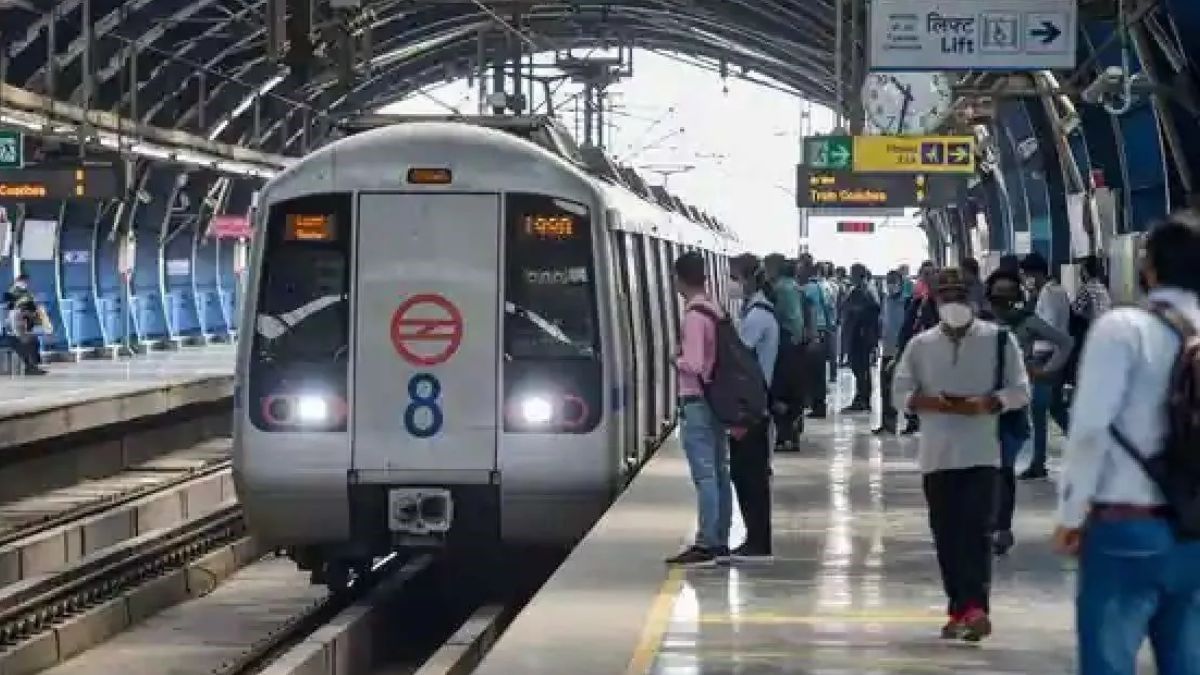Delhi Metro’s Lajpat Nagar-Saket G Block Corridor: A Step Towards Enhanced Connectivity
The Delhi Metro Rail Corporation (DMRC) is actively preparing for the construction of the proposed Lajpat Nagar-Saket G Block corridor, even before the tender has been officially issued. This proactive approach underscores the project’s significance in enhancing Delhi’s public transportation infrastructure and improving connectivity in a densely populated area. Preparatory work, including road widening to mitigate traffic disruptions during construction, is already underway. This highlights DMRC’s commitment to minimizing inconvenience for residents during the construction phase of this ambitious project. The planned corridor promises to significantly improve commuting ease for residents and contribute to a more efficient transportation network across South Delhi.
Project Details and Scope
The Lajpat Nagar-Saket G Block corridor is part of a larger plan approved by the central government to build two new metro corridors in Delhi. This particular line will span 38 kilometers and be entirely elevated. The proposed nine stations along this route include Lajpat Nagar, Andrews Ganj, Greater Kailash-1, Chirag Delhi, Pushpa Bhawan, Saket District Center, Pushp Vihar, and Saket G Block, strategically positioned to serve key residential and commercial areas.
Road Widening Initiatives
A crucial aspect of the preparatory phase involves increasing the width of Birla Vidya Niketan Marg, a key stretch for the corridor between Pushpa Bhawan and Saket G Block. This proactive measure is necessary because the current road width is insufficient to accommodate the construction of the elevated metro line without major traffic disruptions. The road widening project is slated for completion within six months of tender allocation, indicating a swift and decisive approach to resolving this crucial logistical challenge. This showcases DMRC’s dedication to well-planned execution to minimise inconvenience during the project’s entire lifecycle.
Timeline and Future Outlook
While the tender for construction is yet to be issued, the commencement of road widening signifies that the project is progressing toward its implementation phase. The quick commencement of preparatory work hints at the expected fast-track construction process to minimise delays in bringing improved infrastructure to residents. The timeline for issuing the tender is expected soon, with construction anticipated to start immediately thereafter. This ambitious project underscores the government’s dedication to expanding metro services and improving connectivity across the capital.
Significance of the Lajpat Nagar-Saket G Block Corridor
The construction of the Lajpat Nagar-Saket G Block metro corridor holds significant importance for the residents and commuters of South Delhi. It promises a notable reduction in travel time between Lajpat Nagar and Saket G Block, two significant areas that currently experience high traffic congestion. This reduction of travel times is key in modern times where time is of the essence. By offering an efficient and convenient alternative to road transport, this corridor will aid in decongesting the roads, reducing carbon emissions, and facilitating better overall accessibility. This investment contributes significantly to reducing congestion in what is typically an extremely congested area of Delhi.
Impact on Commuters
This improved connectivity will provide an invaluable improvement for numerous commuters and aid the overall development of this area. The reduction in travel time will greatly benefit students, office-goers, shoppers, and many others who regularly travel between these areas. This enhanced accessibility is anticipated to stimulate economic activity and make the neighbourhoods far more connected. The construction will positively impact multiple aspects of city life from the reduction of travel times to improving daily commutes.
Economic and Social Benefits
Besides enhanced mobility, this metro line is likely to lead to improved property values, stimulate economic growth in the adjacent areas and boost employment opportunities in the construction and associated industries. This improved transport is likely to bring multiple associated economic benefits.
Bahadurgarh-Assoda Metro Line Extension
While the Lajpat Nagar-Saket G Block corridor is the primary focus, significant developments are also taking place concerning the potential extension of the metro line from Bahadurgarh to Assoda. A recent meeting between Chief Minister Naib Saini and Union Minister Manohar Lal saw the decision to undertake further ridership surveys to assess the viability of this extension. The results of these surveys are critical for making informed decisions on expanding connectivity to reach more people across the region. These surveys reflect that the metro infrastructure development aims to maximise coverage.
Ridership Surveys and Future Plans
Haryana Mass Rapid Transport Corporation (HMRTC) has already completed an initial ridership survey, and this is to be followed up by a detailed, conclusive passenger number study. The outcome will play a vital role in justifying the feasibility and resource allocation to the Bahadurgarh-Assoda project. This highlights the data-driven approach taken by the authorities, prioritizing effective utilisation of resources to enhance the city’s transportation networks. Based on the findings of this study, more can be done towards ensuring the positive impacts of the proposed line.
Takeaway Points
- The Lajpat Nagar-Saket G Block Metro corridor is undergoing active preparatory work, even before the tender is issued.
- Road widening on Birla Vidya Niketan Marg is underway to facilitate smooth construction.
- The corridor is projected to significantly enhance connectivity in South Delhi.
- Surveys for a potential Bahadurgarh-Assoda metro line extension are currently underway, indicating proactive steps to broaden metro reach.
- Both projects showcase a data-driven approach and focus on improving mobility in the Delhi region.




